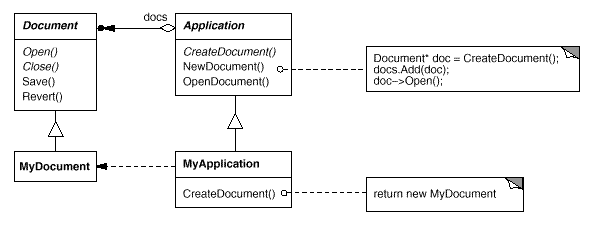Consider a framework for applications that can present multiple documents to the user. Two key abstractions in this framework are the classes Application and Document. Both classes are abstract, and clients have to subclass them to realize their application-specific implementations. To create a drawing application, define the classes DrawingApplication and DrawingDocument. The Application class is responsible for managing Documents and will create them as required.
Because the particular Document subclass to instantiate is application-specific, the Application class can't predict the subclass of Document to instantiate—the Application class only knows when a new document should be created, not what kind of Document to create. This creates a dilemma: The framework must instantiate classes, but it only knows about abstract classes, which it cannot instantiate.
The Factory Method pattern offers a solution. It encapsulates the knowledge of which Document subclass to create and moves this knowledge out of the framework.
